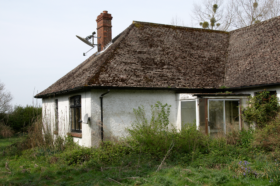
21st-22nd February 2026 - time to get your dream home started!
BOOK HERE
21st-22nd February 2026 - time to get your dream home started!
BOOK HEREExemption from CIL payments moved a step closer this week, as the government completed its formal consultation on the Community Infrastructure Levy and its impact on self-builders.
Following the mid-September announcement that self-builders will soon be freed of the burden of both the CIL and Section 106 charges, planning minister Nick Boles has reiterated the government’s plans to exempt owner-occupied self-build projects.
“Our changes will make an enormous difference to people looking to realise their dream of having their grand design built and will save self-builders thousands of pounds,” said Boles. “We urgently need to build more homes and changes to the levy will help increase housing supply and help businesses grow by making the system more flexible and fairer.”
Relief from the Community Infrastructure Levy will be available on new homes built or commissioned by individuals, families or groups of individuals for their own use – but only on the proviso that they will be owner-occupied.
And in a surprise move, the Department for Communities and Local Government also announced plans to exempt other residential developments, including extensions over 100m2 and free-standing residential annexes.
Exactly when the CIL exemption will come into force is subject to the Parliamentary process, but crucially the government has stated that it intends for the CIL changes to come into effect by the end of January 2014.
The official CIL consultation concluded in May this year, but the government’s response has only just been published following the additional input of 604 self-builders, whose opinions were canvassed by the National Self-Build Association (NaSBA).
While many local authorities were opposed to the proposals (often citing reduced revenue potential as a key argument), developers were surprisingly divided between those who thought it unfair to favour a particular sector of the market and those who welcomed the relief.
NaSBA’s own survey revealed 98% of self-builders to be in favour of the CIL exemption.
In its conclusions on the consultation, the government stated that “we remain of the firm view that people who build their own homes don’t compete on a level playing field with builders, for the reasons set out in the consultation document, and that many find the levy charges prohibitively expensive and that they can threaten the viability of their projects.”
However, the consultation did raise legitimate concerns about the administrative burden of the proposals and the potential for misuse of the relief.
The government intends to address these by establishing what it calls a “tough eligibility test” that will require self-builders to prove their intention to be ‘owner-occupiers’ for three years. This will take the form of a two stage process:
1) Prior to the commencement of a project, legitimate self-builders will be asked to declare that their project qualifies for CIL relief.
2) On completition, supporting evidence must be provided to prove eligibility for the CIL exemption. This evidence must be one of the following:
In addition, self-builders will also have to provide evidence of a self-build mortgage, approved VAT refund or a self-build warranty.
The consultant revealed a number of concerns about exempting self-build developments while retaining payments for other forms of residential development, including extensions (the levy is currently chargeable on all extensions over 100m2).
In response, the government said “we agree that it would be inconsistent to exempt self-build housing, but not residential extensions or free-standing ‘residential annexes’ within the grounds of existing homes. Therefore we also propose to exempt this residential development from the levy, subject to robust but straightforward eligibility tests.”
UPDATE 8th Feb 2014: The draft amendments to the CIL (including exempting self-builders from the levy) are now set to be debated in parliamentary committee on 10th February 2014.
UPDATE 6th March 2014: Self-builders have now been exempted from the CIL.


Comments are closed.